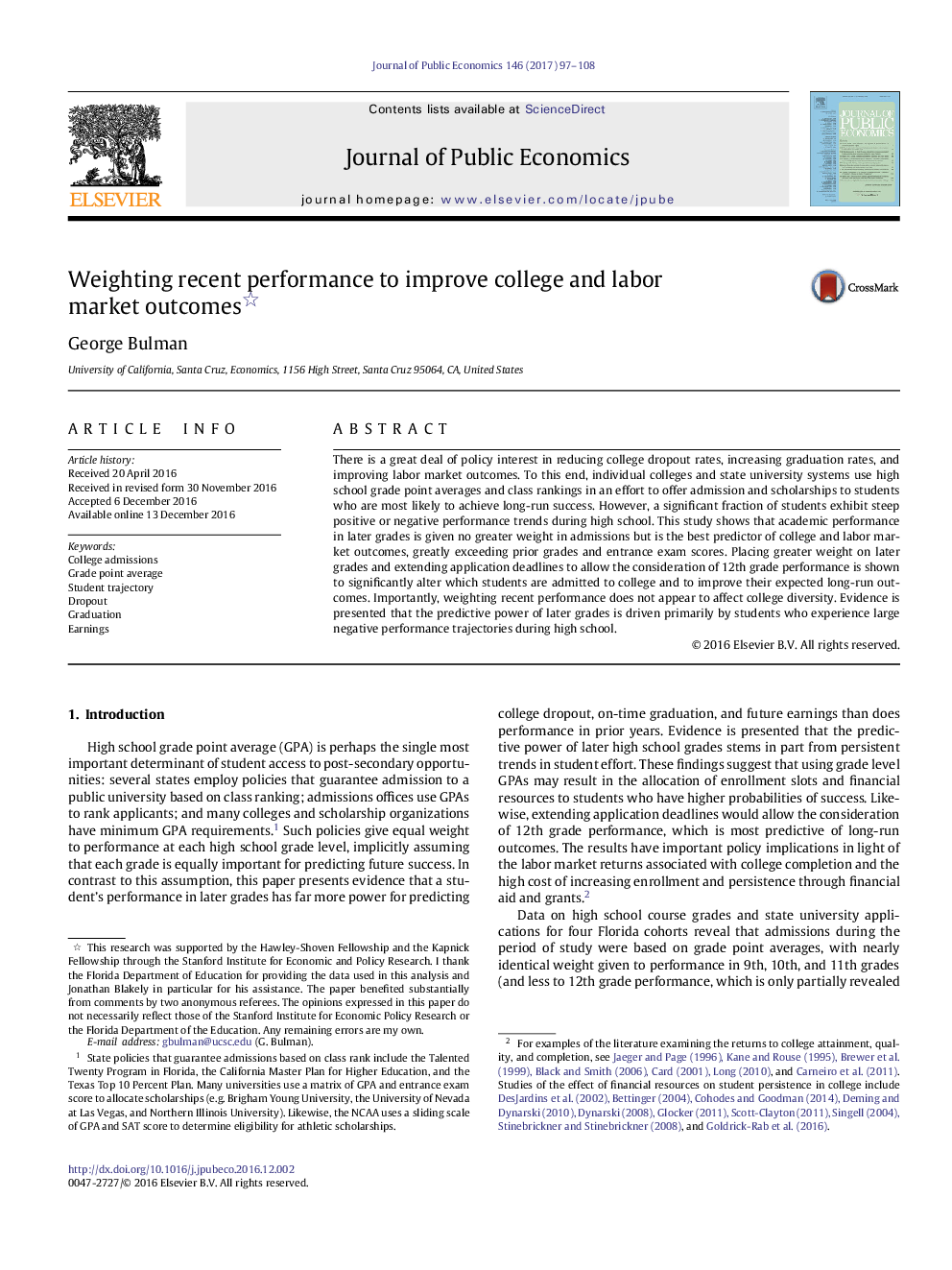| Article ID | Journal | Published Year | Pages | File Type |
|---|---|---|---|---|
| 5101900 | Journal of Public Economics | 2017 | 12 Pages |
Abstract
There is a great deal of policy interest in reducing college dropout rates, increasing graduation rates, and improving labor market outcomes. To this end, individual colleges and state university systems use high school grade point averages and class rankings in an effort to offer admission and scholarships to students who are most likely to achieve long-run success. However, a significant fraction of students exhibit steep positive or negative performance trends during high school. This study shows that academic performance in later grades is given no greater weight in admissions but is the best predictor of college and labor market outcomes, greatly exceeding prior grades and entrance exam scores. Placing greater weight on later grades and extending application deadlines to allow the consideration of 12th grade performance is shown to significantly alter which students are admitted to college and to improve their expected long-run outcomes. Importantly, weighting recent performance does not appear to affect college diversity. Evidence is presented that the predictive power of later grades is driven primarily by students who experience large negative performance trajectories during high school.
Related Topics
Social Sciences and Humanities
Economics, Econometrics and Finance
Economics and Econometrics
Authors
George Bulman,
